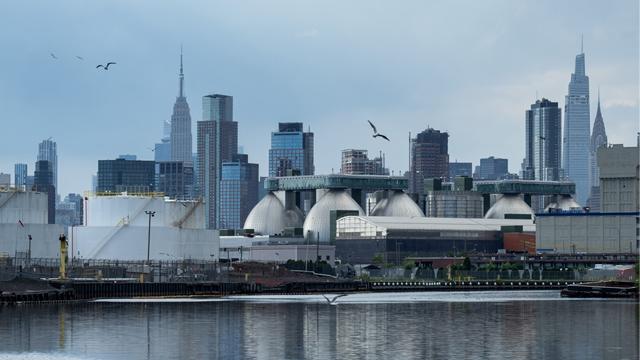Are you an RNG producer or a feedstock owner? Please use this page for information on interconnecting to the National Grid gas network, and to start your application for interconnection.
How to apply for an RNG interconnection
We're committed to maintaining the safety and reliability of the system, so please contact us at least 24—36 months prior to your desired in-service date.
Steps to begin the interconnection process:
1. Review our Gas Quality Standards table*:
| Gas Property | Value | Units |
| Heating Value | 975-1110 | BTU/scf |
| Moisture Content | < 7 | lbs/mmscf |
| CO2 | < 2 | % mole |
| O2 | < 0.2 | % mole |
| Total Inerts | < 4 | % mole |
| Hydrogen Sulfide (H2S) | < 4 | ppmv |
| Wobbe Number | 1270 - 1400 | BTU/scf |
2. View our RNG knowledge pages for additional information on seminars and the interconnection process
Once we've received your application, we'll contact you to discuss the next steps.

The RNG interconnection process
- First, the max injection rate will be vetted against our existing system capacity, to ensure the RNG project will be viable throughout the year and not just during the coldest months.
- Next, a high-level interconnection solution will be vetted and studied, collaborating for increased precision until a construction plan is developed and implemented.
- Finally, the process ends with commissioning of the system and hand off for ongoing operations and maintenance.
Please note that the costs associated with this process are the responsibility of the interconnecting project's owner.
Need additional support?
Throughout the interconnection process, our Customer Energy Integration (CEI) team will be available to guide you through the process.
Our team will be in touch with you once your application has been entered into our system. They will be your primary contact at National Grid to support applicants and facilitate coordination with other National Grid teams through the process.
If you need help with submitting your application, or have other general questions, you can email us.
Our plan: National Grid net zero by 2050
Climate change is the greatest challenge facing the world, our country, and our region. National Grid supports our states’ goals in reducing greenhouse gas emissions economywide. We recognize that decarbonizing our electric and gas systems will require resolving many questions and seeking new partnerships, technologies, energy policies, utility regulatory models, and transformative investments. Though we do not have all the answers, we are eager to collaborate on solutions and to step up in addressing these challenges. We aim to achieve net zero greenhouse gas (GHG) emissions by 2050, including our own operations and emissions that result from the sale of electricity and gas to our customers.
Decarbonizing the Gas Network with Renewable Natural Gas and Hydrogen is one of the key pillars in achieving this goal. We will transition away from delivering traditional geologic natural gas to our customers to providing them with low- and zero-carbon renewable natural gas (RNG) and hydrogen. We will scale utilization of RNG from sustainable biomass feedstocks (e.g., wastewater, landfills, food waste, livestock manure, and other), looking for the most readily scalable and affordable supplies for our customers.
What is RNG?
RNG is derived from a variety of organic waste materials used in daily life. For example: food waste, biodegradable plant material, animal waste, paper, cardboard, and wood. This abundance of renewable energy sources is important since wind and solar energy are intermittent and often rely on supplemental supply of power when the wind isn’t blowing, or the sun isn’t shining.
Renewable natural gas can play a significant role in the future of energy. While the biggest driver of the focus on renewable energy is greenhouse gas reduction, what makes renewable gas more compelling is that it also provides the following:
- Enhances diversity of supply
- Stimulates local economy and creates green jobs
- Provides a real and innovative solution for using local waste resources to produce renewable energy
- Reduces waste buildup
- Creates a more efficient use for the fuel
- Leverages the existing gas network to deliver a renewable fuel
Get in touch
Email us: [email protected]
This Privacy Disclosure applies solely with respect to National Grid’s RNG Interconnection program (the “Program”). National Grid means National Grid USA Service Company Inc. and its United States affiliates. For more information about National Grid’s policies and procedures regarding customer data, including information-gathering and dissemination practices for any and all of our customers’ information, please refer to our Privacy Policy (https://www.nationalgrid.com/privacy-policy) and Terms of Use (https://www.nationalgrid.com/terms-and-conditions).
*Note: this does not capture all National Grid Gas quality standards. Based on the type of gas, other trace constituent requirements will need to be taken into consideration. Meeting these standards does not ensure that a RNG project will be approved. RNG projects must be confirmed through an interconnection study with National Grid for approval.